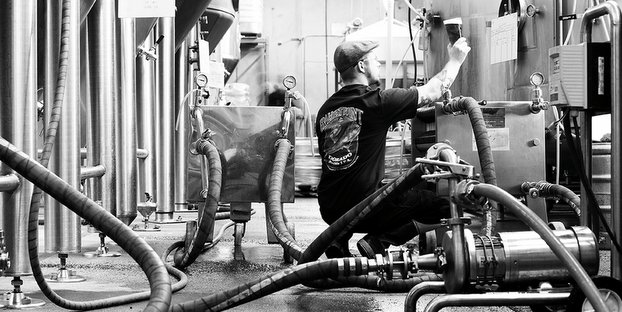
As the craft brewing industry grows, industrious craft breweries start to add to their footprint. This requires more equipment, more building space, more locations and, of course, more employees.
Oh, but where do you begin a newbie in the brewing process? So many terms, so many tasks: How do you train these new employees without slowing your continued growth or diminishing the quality that has brought you to that point? We asked the team at Ballast Point Brewing Co. about their corporate philosophy.
In 2012, Ballast Point expanded its brewery, growing 78 percent in production. The staff nearly doubled, and the company is now looking for another location and planning to add a line of cans. After 15 years of consistently growing their San Diego craft brewery and distillery, co-founders Jack White and Yuseff Cherney have developed a tried and true method for bringing aboard new hires, grooming them and growing them to be professional brewers.
“Learning each step thoroughly, from cleaning and packaging, to cellaring and brewing creates an employee who is far more valuable than one who is specialized in a single task,” said Ryan Glenn, director of operations at Ballast Point Brewing and Spirits.
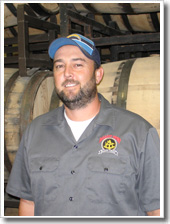
Wash these kegs, then we’ll talk
Ballast Point now has 77 employees, and nearly all of them have started at the bottom, or rather the end: keg washing and packaging at the end of the bottling line. From there, they will be trained on filling kegs. Then it will be onto the bottling line operation or cellaring (fining, filtration, carbonation), and eventually, on to brewing.
“Before someone ever touches the grains and hops, he or she must be knowledgeable about each and every facet of the brewery,” said Nolan Tondee, packaging manager at Ballast Point. “Even if someone already has the schooling or the knowledge of brewing, the most effective onboarding process is to ‘just do it.’ Each system, each machine and each beer has its own nuances, so to master brewing one first needs to master the equipment.”
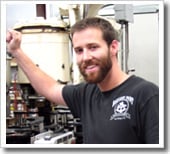
There is a balance there between molding a proficient brewer and overloading a green employee with too much information. Ballast Point divides the training into sections to avoid overwhelming the new hire. The training, depending on the individual and the specific position being filled, can take anywhere from one to three months.
Glenn said all training is hands-on. Employees are shadowed until the trainer feels confident in removing the training wheels. This is plain and simple operant learning – watch, do and do again until you know it intuitively.
“You can’t give someone a set of printed instructions and expect them to fully understand the task at hand,” Glenn said. “Employees should be encouraged to ask questions and urged to speak up about any mistakes they may have made without fear of ridicule. Mistakes are made by everyone from employees in training to the most experienced. Learning how to identify and fix your mistakes is hugely important when you are dealing with a product that is going to be consumed by the public.”
Nature vs. Nurture
The early going isn’t just for the rookie to learn the ropes. Glenn said even more qualified employees typically start at the end of the line in order for the team to “evaluate their personal makeup.” There have been times Ballast Point hired a person with brewing experience and put them in a brewer’s job immediately, but the learning curve was much steeper because they lacked the background knowledge gained from working in other areas of the production brewery.
“These individuals all turned out to be good hires eventually, but their training only reinforced that our practice of promoting from within works,” Glenn said.
It is a fact that everyone loves beer and everyone loves breweries (right?), but not everyone would love a career in brewing. There are long hours, lots of repetition and even the most passionate craft beer lovers might despise a couple weeks working behind the scenes. That’s important to remember in the hiring, training and evaluation process. New employees at Ballast, in a way, are auditioning. How they handle each task along the way, and how they respond to teaching, feedback and adversity are important. The initial stages allow the team to get a feel for the new employees’ work ethic, competency and general desire to work there.
“When hiring, we typically try to choose a person with a good work history who needs a job over someone whose main qualification is a passion for making beer,” Glenn said. “If someone has demonstrated that they can hold a job doing some other sort of work, it shows me that they are able to find satisfaction in what they are doing. Changing jobs every six months shows me that a person is either easily bored or that there may be a personality issue. That being said, working in a brewery is highly desirable for a lot of people, and an employee who appreciates this is more likely to find satisfaction in a job that is not often as glamorous as it sounds.”
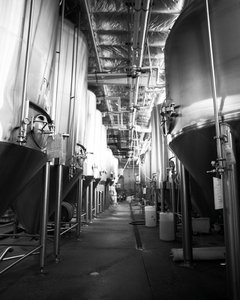
Perhaps the greatest concern in training is safety. It is easy for veterans of the trade to forget where the hidden dangers are for someone new to the process — from chemicals and scorching hot water to moving machinery and pressurized vessels.
“The second biggest factor in training is learning how to troubleshoot,” Tondee said. “As a new hire, you will quickly learn that it’s vital to use all five of your senses and to always check yourself, as these are the foundations for creating a safe and efficient brewery.”
“Learning how to safely and effectively complete tasks and communicate problems is paramount,” Glenn echoed. “In a repetitive job there are always going to be anomalies. Recognizing them and figuring out the best way to approach them is hugely important to the learning process. Because we are working with heat, pressure and chemicals, these anomalies can cause safety issues.”
But mistakes happen. The key is to limit a new employee’s exposure to the most perilous situations so the worst that can happen is spilled beer.
“We have all had our moments. From a stain on a T-shirt, to a complete soaking with boots full of 33-degree beer,” Glenn said. “Fast learners stay warm and dry.”
Culture of training
These rookies don’t stay in these positions forever. The early jobs are not dead-end positions that are continually shuffling new faces in and out as part-timers. Tondee said that most of the current brewers at Ballast Point got to that position through working up the ranks. Just one example: A keg washer was hired in late-2011 and through hard work and devotion to Ballast Point, he moved all the way to brewer within a year.
“Since they have succeeded in multiple other roles by the time they reach brewer status, they know the ins and outs of the entire brewery. The only new thing to them at that point then is the brewing itself,” Tondee said.
The continuing cycle of in-house promotion also gives those at the top perspective on what the new guy is going through, as they themselves have been there before. When the inevitable first beer shower happens (incorrectly disengaging the sankey from the keg), sure it’s hilarious (and perhaps a little annoying), but there isn’t a soul on staff that didn’t have a similar experience.
“Because we promote from within, all of our brewers or other more advanced employees are able to coach new hires and help troubleshoot problems that arise,” Glenn said “This also fosters a sense of camaraderie among employees. And new guys can take heart in knowing that if they do things the way they are being taught, it will serve them well, as it did the one training them.”
The emphasis on communication and teambuilding has a benefit beyond crafting a delicious product in a timely manner, as it also strengthens morale and camaraderie.
What doesn’t work? Selfishness — either on the part of the trainer or trainee.
“Naturally, if a trainee doesn’t have a team-oriented mindset, it is impossible to succeed in the brewing business,” Tondee said. “On the other end of the spectrum, if a trainer is focusing on their own work because he or she is too busy to take the time to train their employee, the trainee will not gain the foundation to eventually make the employer less busy in the long run.”


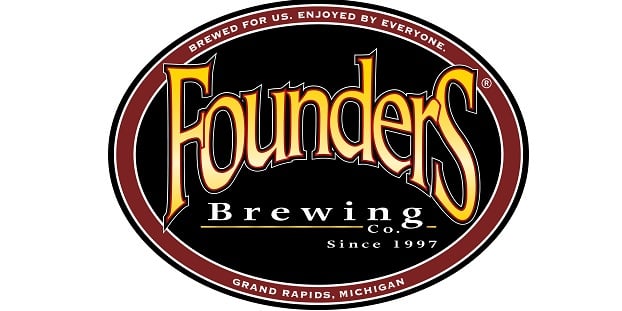
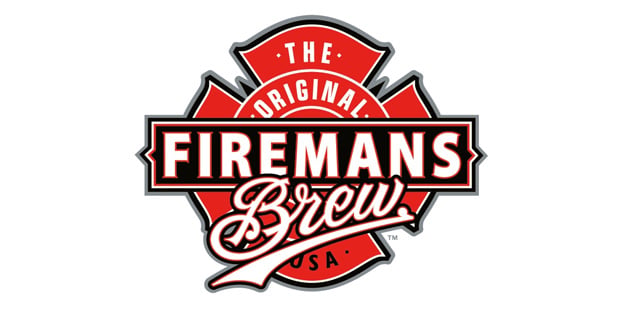

RT @CraftBrewingBiz: Brewer training with @BPbrewing: How to turn a keg washer into a brewer http://t.co/YqYHQlXONu #sundayreading
I’m glad to hear that craft breweries like Ballast Point truly allow their employees the opportunity to gain experience in all areas of the brewery and move up the ranks. My only experience is with Left Hand Brewing, but it became fairly clear after 5 months that the company was dangling the prospect of moving up to cellaring and brewing in order to keep people on the packaging line for years. I questioned whether all regional craft breweries did the same to keep people doing less attractive brewery work. I’m glad to hear that is not universally the case.